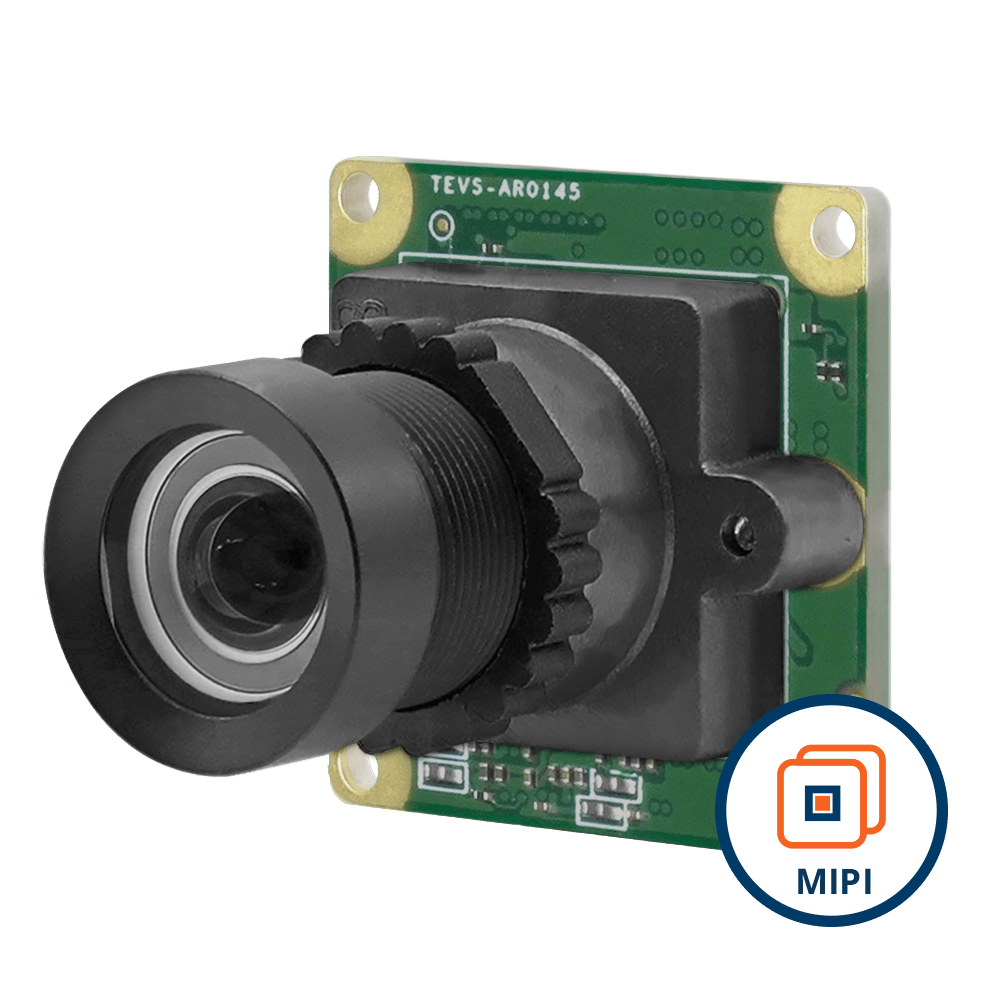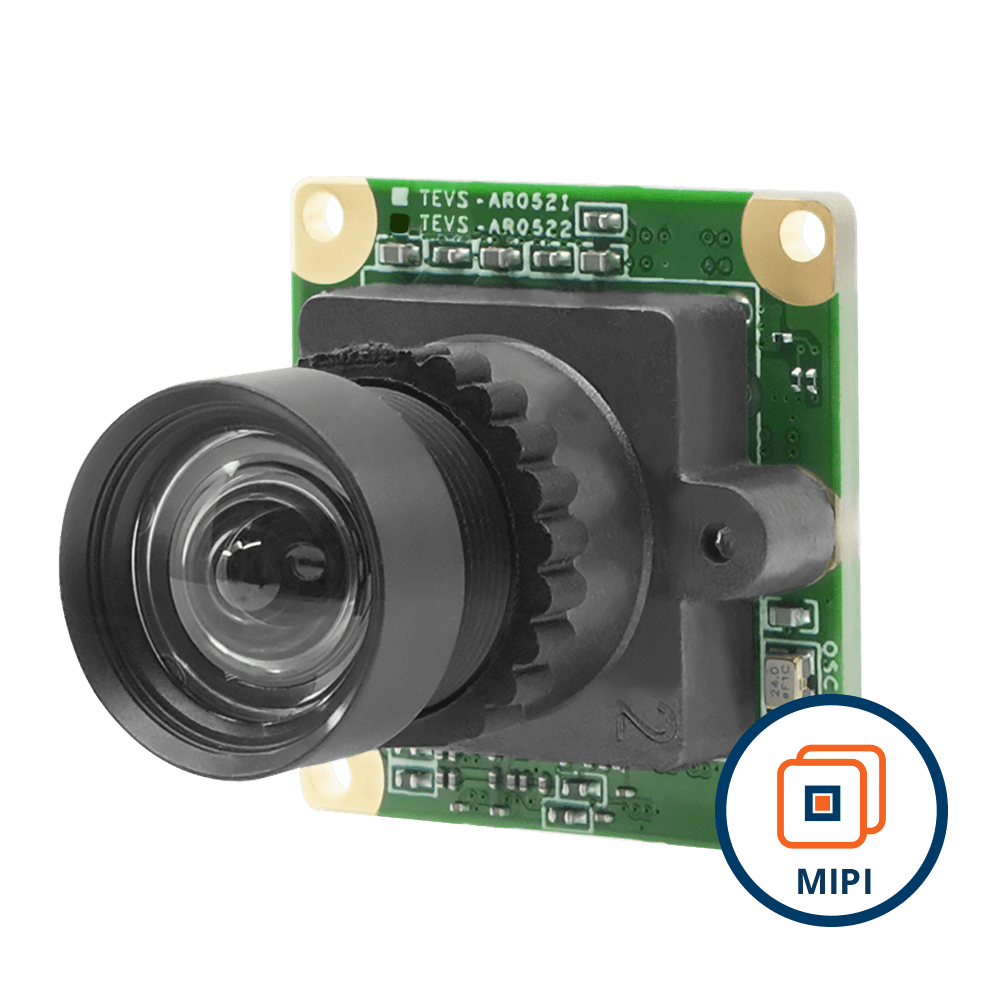Embedded vision is a vast topic. From sensors and lenses to interfaces and processors, there are plenty of areas that often contain complex concepts and ideas. There are numerous factors to consider while choosing a camera for your embedded vision system. This is why it is always recommended to work with an imaging expert like TechNexion for your camera integration journey.
But if you are building an embedded vision system, you need to know the basic concepts associated with camera technology. That will help you get started with integrating cameras into your system, at least to an extent where you know the most important camera features.
In this blog post, we discuss a key concept related to camera and lens technology called the f-number. We will learn its definition, how to calculate it, and its relevance in embedded vision applications.
What is the f-number?
F-number is defined as the ratio of the focal length to the aperture diameter of a lens. It is also called the f-stop number. It represents the amount of light a lens can let in. It can be calculated using the below formula.
F number = f/d
Where f is the focal length and d is the diameter of the lens’s aperture.
The larger the f-number, the lower the aperture, and the lower the amount of light it allows to pass through. For example, a 50mm lens with a diameter of 6.25mm will have an f-number of f/8.
To understand the concept better, have a look at the below lens aperture chart:
As you can see in the image, the aperture diameter reduces with the increase in the value of the f-number.

Lens aperture chart
Why is the f-number relevant in embedded vision applications?
F-number determines the size of the cone of light that falls on the image sensor or plane. While it is a lens parameter, the sensor should also be compatible with the lens to ensure that the sensor area is fully utilized and no vignetting or shading occurs.
Read more about sensor-lens matching here: Matching Image Sensor and Lens – the What and the How.
Following are the reasons why f-number is extremely important in embedded vision systems:
- It determines how much light falls on the sensor.
- It influences the depth of the field of the camera.
- The F-number helps you control the exposure of the camera.
Amount of light – why does it matter?
The quality of the image output in a camera system depends on the amount and nature of light that falls on the sensor. With a smaller f-number (or larger aperture), more light can be let in, thereby increasing the possibility of getting more details of the scene. On the other hand, a larger f-number denotes a small aperture, which in turn limits the light that falls on the sensor.
It is important to note here that more light is not always good. For example, in bright sunlight, a large aperture might result in the final image getting washed out. On the contrary, in low light conditions, it is recommended to have a higher aperture. Otherwise, the output image might be too dim or dark, which may result in the loss of essential details.
F-number and depth of field
Depth of field is the distance between the nearest and farthest objects within which they remain sharp. A lower depth of field is what is used for portrait photography while a large depth of field is suitable for capturing images across a long distance or area.
Now, let’s come to the relation between f-number and depth of field.
A smaller f-number means a shallow depth of field and a larger f-number represents a large depth of field. This essentially means that only objects within a limited distance can be kept in focus sharply if the f-number is small.
Controlling exposure with f-number
This is related to the first point we discussed – the amount of light.
In low light situations, cameras need to maintain a large aperture for more light to come in, whereas, in bright light conditions, a small aperture is recommended. Hence, you can pick a lens for the required exposure levels based on the f-number. However, exposure can also be adjusted by controlling the exposure time of the camera, which has nothing to do with the lens.
Should you choose a lens based on the f-number alone?
While f-number is an important lens parameter, selecting the right lens for your embedded vision system involves much more than that. You need to consider various other factors such as sensor compatibility, focal length, field of view, lens mount compatibility, image circle diameter, etc. This makes the process of lens selection more complex than you think. Consulting an imaging expert like TechNexion is a good idea before you finalize a lens for your imaging system.
To learn in detail about choosing a lens for your embedded vision system, please read the below article:
When to go for a large f-number?
As mentioned above, a large f-number denotes a small aperture and should be opted only for applications where the light supply is adequate. Though the f-number is not the only parameter that determines the quantity of light that falls on the image sensor, it is one of the contributing factors. Hence, if your vision system operates in a well-lit environment, go for a large f-number lens. This will offer you advantages such as a larger depth of field, enabling you to cover a long range.
Examples of applications that can use a lens with a large f-number are:
- A service robot used in a retail store – Retail stores are always well-lit. Hence, service robots that are primarily used as shopping assistants can very well go with a lens with a large f-number.
- A smart traffic system operating under bright light – During the day, smart traffic cameras have adequate light. In the night, if there is enough external light supply, a large f-number is suitable. This will also help the system to benefit from the large depth of field.
- Sports analytics and broadcasting systems – Sports arenas are always well-lit. The cameras used for sports broadcasting also need to have long range – which helps them to cover a wide area. This scenario is perfectly suitable for a large f-number lens.
- Autonomous checkout systems – Autonomous checkout systems that are mounted on the roof or the shelves of a retail store need a slightly higher depth of field than close-range cameras. Further, given that lighting is always controlled in these places, a camera and lens with a large f-number is a great fit for this use case.

When to go for a small f-number lens?
Now that we have discussed where large f-number lenses are used, you can probably guess where small f-number lenses are used. A small f-number means a large aperture and hence is suited for low light applications. They can also be used in devices that do not need a large depth of field. One key thing to note here is that the sensor has to be large enough to be able to fully capture the image cone projected by the lens onto the image plane. This might require you to use a large sensor (1/2” or larger – depending on the f-stop value).
Next, let us look at a few key applications where a small f-number lens can be used:
- Digital and medical microscopy – Cameras used in microscopes need to come with high sensitivity to capture even the minute details of the specimen. In addition, since the specimen has to be observed only within a very small distance, the camera can afford to have a low depth of field. These two reasons make a good case for small f-number lenses in microscopic applications.
- Biometric devices – Biometric systems used for identity verification and security purposes could sometimes face low light scenarios. A lens with a small f-number ensures that enough light always falls on the sensor.

- ATM and vending kiosks – Modern ATM and vending kiosks use cameras for different purposes such as facial recognition, anti-spoofing, object recognition, etc. Since lighting conditions can vary in their locations, having a large f-number can improve the image quality. Particularly for tasks like facial recognition, since every detail matters, a small f-number lens is a good to have.
- Medical diagnostic devices – Most medical diagnostic devices need only a small depth of field. Some of them also use dim or IR light sources to get the right data of an organ or body part. Take fundus cameras for example. They use a near-infrared light source for retinal guidance. A lens with a small f-number is a great choice here.
How TechNexion can help with the lens selection process
TechNexion takes pride in its wide portfolio of embedded cameras. Combining that with our unmatched engineering expertise has helped us support numerous customers through their camera and lens integration journey. Considering that lens selection involves the evaluation of multiple parameters, it might turn you away from focusing on the core aspects of your product development. TechNexion can help there by acting as an imaging partner by offering our camera solutions while also helping to choose a lens that is suitable for your end application. Learn more about our embedded vision solutions here: embedded vision cameras.



